Opponent control of behavior by dorsomedial striatal pathways depends on task demands and internal state
- PMID: 35260863
- PMCID: PMC8915388
- DOI: 10.1038/s41593-022-01021-9
Opponent control of behavior by dorsomedial striatal pathways depends on task demands and internal state
Abstract
A classic view of the striatum holds that activity in direct and indirect pathways oppositely modulates motor output. Whether this involves direct control of movement, or reflects a cognitive process underlying movement, remains unresolved. Here we find that strong, opponent control of behavior by the two pathways of the dorsomedial striatum depends on the cognitive requirements of a task. Furthermore, a latent state model (a hidden Markov model with generalized linear model observations) reveals that-even within a single task-the contribution of the two pathways to behavior is state dependent. Specifically, the two pathways have large contributions in one of two states associated with a strategy of evidence accumulation, compared to a state associated with a strategy of repeating previous choices. Thus, both the demands imposed by a task, as well as the internal state of mice when performing a task, determine whether dorsomedial striatum pathways provide strong and opponent control of behavior.
© 2022. The Author(s), under exclusive licence to Springer Nature America, Inc.
Conflict of interest statement
Competing Interests
The authors declare no competing financial interests.
Figures


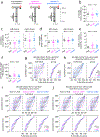
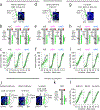
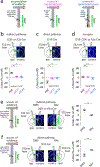

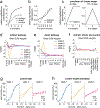


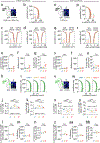
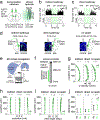

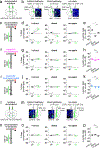
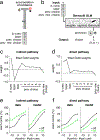
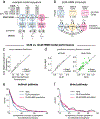
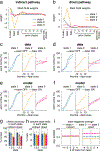
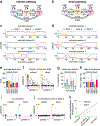
Comment in
-
A blueprint for examining striatal control of cognition.Trends Neurosci. 2022 Sep;45(9):649-650. doi: 10.1016/j.tins.2022.05.009. Epub 2022 Jun 8. Trends Neurosci. 2022. PMID: 35690496 Free PMC article.
Similar articles
-
Chemogenetic Targeting of Dorsomedial Direct-pathway Striatal Projection Neurons Selectively Elicits Rotational Behavior in Mice.Neuroscience. 2019 Mar 1;401:106-116. doi: 10.1016/j.neuroscience.2019.01.013. Epub 2019 Jan 19. Neuroscience. 2019. PMID: 30668973
-
Opposing Roles of the Dorsolateral and Dorsomedial Striatum in the Acquisition of Skilled Action Sequencing in Rats.J Neurosci. 2022 Mar 9;42(10):2039-2051. doi: 10.1523/JNEUROSCI.1907-21.2022. Epub 2022 Jan 27. J Neurosci. 2022. PMID: 35086903 Free PMC article.
-
Thalamic Control of Dorsomedial Striatum Regulates Internal State to Guide Goal-Directed Action Selection.J Neurosci. 2017 Mar 29;37(13):3721-3733. doi: 10.1523/JNEUROSCI.3860-16.2017. Epub 2017 Feb 27. J Neurosci. 2017. PMID: 28242795 Free PMC article.
-
Neural circuit mechanism for learning dependent on dopamine transmission: roles of striatal direct and indirect pathways in sensory discrimination.Adv Pharmacol. 2013;68:143-53. doi: 10.1016/B978-0-12-411512-5.00007-5. Adv Pharmacol. 2013. PMID: 24054143 Review.
-
Functional organization of the basal ganglia: therapeutic implications for Parkinson's disease.Mov Disord. 2008;23 Suppl 3:S548-59. doi: 10.1002/mds.22062. Mov Disord. 2008. PMID: 18781672 Review.
Cited by
-
Basal ganglia components have distinct computational roles in decision-making dynamics under conflict and uncertainty.PLoS Biol. 2025 Jan 23;23(1):e3002978. doi: 10.1371/journal.pbio.3002978. eCollection 2025 Jan. PLoS Biol. 2025. PMID: 39847590 Free PMC article.
-
Optogenetic Globus Pallidus Stimulation Improves Motor Deficits in 6-Hydroxydopamine-Lesioned Mouse Model of Parkinson's Disease.Int J Mol Sci. 2023 Apr 27;24(9):7935. doi: 10.3390/ijms24097935. Int J Mol Sci. 2023. PMID: 37175643 Free PMC article.
-
Prefrontal transthalamic uncertainty processing drives flexible switching.Nature. 2025 Jan;637(8044):127-136. doi: 10.1038/s41586-024-08180-8. Epub 2024 Nov 13. Nature. 2025. PMID: 39537928
-
Modeling Complex Animal Behavior with Latent State Inverse Reinforcement Learning.bioRxiv [Preprint]. 2024 Nov 14:2024.11.13.623515. doi: 10.1101/2024.11.13.623515. bioRxiv. 2024. PMID: 39605387 Free PMC article. Preprint.
-
Behavioral strategy shapes activation of the Vip-Sst disinhibitory circuit in visual cortex.Neuron. 2024 Jun 5;112(11):1876-1890.e4. doi: 10.1016/j.neuron.2024.02.008. Epub 2024 Mar 5. Neuron. 2024. PMID: 38447579 Free PMC article.
References
METHODS REFERENCES
-
- Wichmann FA & Hill NJ The psychometric function: I. Fitting, sampling, and goodness of fit. Percept. Psychophys 63, 1293–1313 (2001). - PubMed
-
- Pillow JW, Ahmadian Y & Paninski L Model-based decoding, information estimation, and change-point detection techniques for multineuron spike trains. Neural Comput. 23, 1–45 (2011). - PubMed
-
- Bishop CM Pattern Recognition and Machine Learning (Information Science and Statistics). (Springer-Verlag, 2006).
Publication types
MeSH terms
Associated data
Grants and funding
LinkOut - more resources
Full Text Sources
Molecular Biology Databases

